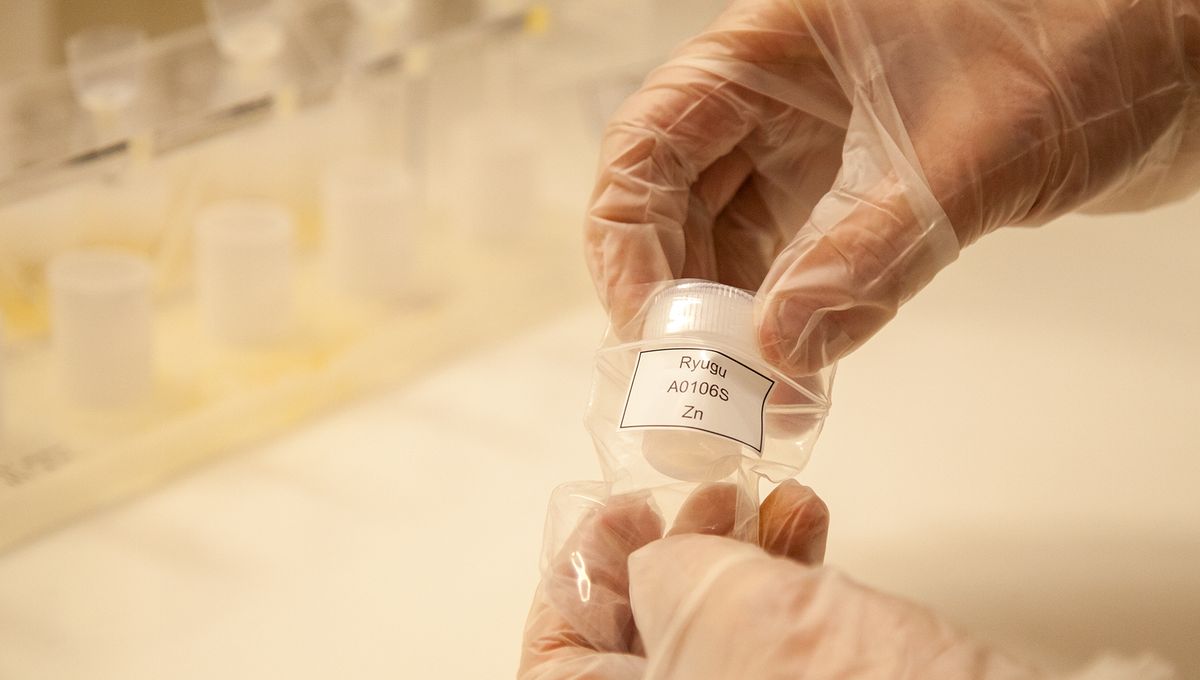
Two years and one week ago, the Japanese spacecraft Hayabusa-2 delivered to Earth a special cargo: samples of material collected on Asteroid Ryugu. Analysis of the precious few grams of soil from the surface and subsurface of the asteroid has revealed new insights into the past of our planet and the whole solar system.
An international team of scientists led by Dr Marine Paquet and Dr Frédéric Moynier, at Institut de Physique du Globe de Paris, studied the composition of the sample. They were particularly interested in the isotopic signatures of zinc and copper. Every chemical element comes in multiple versions depending on the number of neutrons in its core. This doesn’t change its chemical properties, but changes its physical ones as isotopes have different masses. Some isotopes are not-stable, decaying after a while.
The ratio of isotopes so becomes a chemical fingerprint for materials – and when it comes to asteroid and meteorite samples, this not only tells us about the current composition but also tells us how these objects formed.
In the case of asteroid Ryugu, the team confirmed that the isotopic signature of copper and zinc makes it similar to the Ivuna meteorite, something that was put forward before the discovery of amino acids in the samples was announced. The Ivuna meteorite fell in Tanzania on December 16, 1938, and it is part of the CI group of carbonaceous chondrites. There are only nine of them in the world, making them some of the rarest. They are believed to have formed in the outer solar system and eventually migrated inwards.
Ryugu shows similarity in composition to other carbonaceous chondrites, so researchers wondered if another type might be a better fit. Zinc and copper are a place where they differ – and for this reason, scientists chose these elements to make that test confirming the connection to the CI chondrites. The Zinc signature can also be used for another measurement with impacts on the history of our planet.
Materials from Ryugu can be considered pristine when it comes to establishing the composition of the early solar system. Meteorites from asteroids that formed closer to the Sun have a different value from Ryugu, and Earth has a different value still, somewhere in between the two. Armed with that, researchers were able to estimate that asteroid similar to Ryugu must have contributed about six percent of the Earth’s mass.
These findings were presented in the journal Nature Astronomy.
Source Link: Six Percent Of Earth's Mass Was Brought By Asteroids From The Outer Solar System